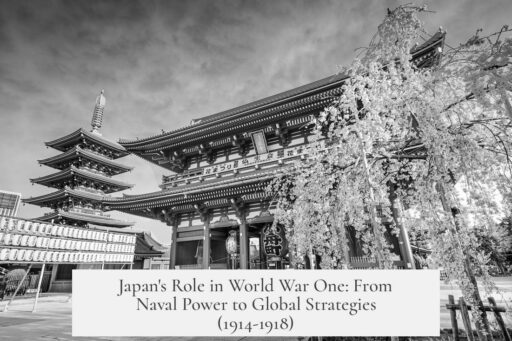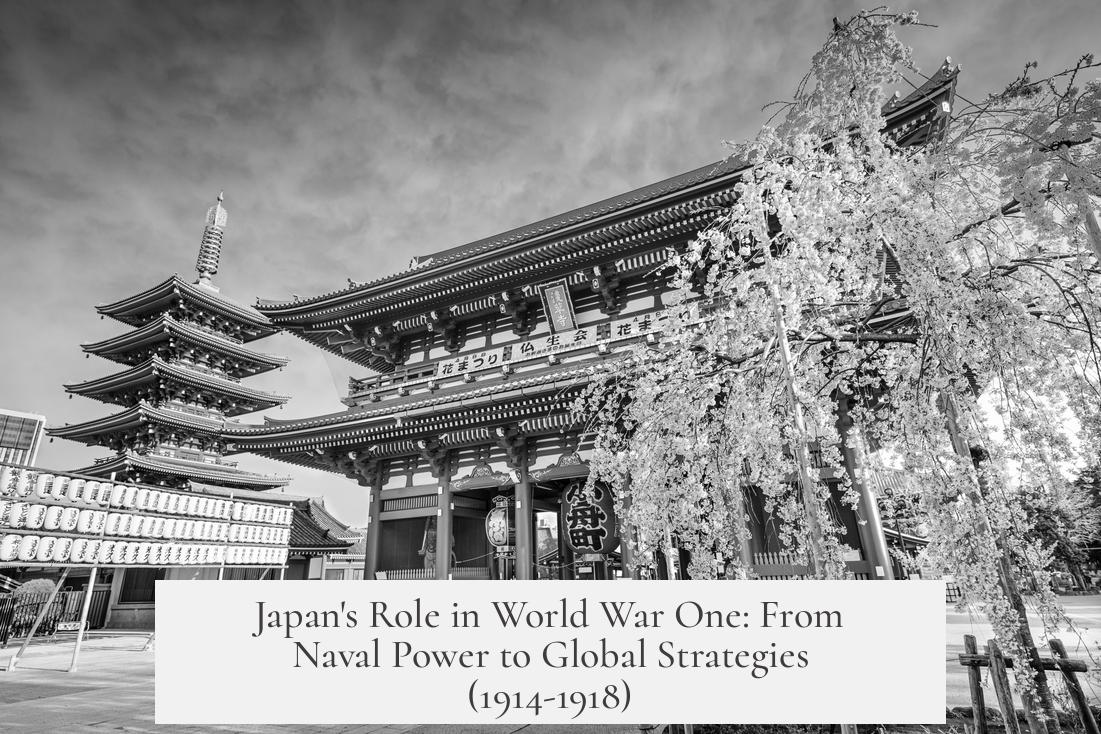Japan actively participated in World War One (1914-1918) on the side of the Entente Powers, joining shortly after Britain declared war on Germany. Its involvement was driven by alliance obligations and imperial ambitions.
Japan formally entered the war on August 23, 1914, following Britain’s declaration on August 4. The Anglo-Japanese Alliance of 1902 enabled Britain to request Japanese assistance, though it did not compel Japan’s entry. Japan seized this chance to strengthen its global position and expand its empire.
Japan’s military focus began immediately in the Pacific. Japan cooperated closely with Britain to identify and neutralize German naval threats in the Indian Ocean and the Pacific. The Imperial Japanese Navy and Army launched a major campaign against German Tsingtao (Qingdao) on China’s Shantung Peninsula. From August to November 1914, Japanese and British forces besieged this German concession, forcing its surrender on November 7.
The Japanese Navy played a key role patrolling the Pacific, protecting Allied shipping, and hunting German raiders. Significant warships like the Kongo, Izumo, Ibuki, Chikuma, Satsuma, Yahagi, and Hirado operated in various strategic locations. These patrols extended from Midway to off the coast of Mexico to Singapore, helping secure Allied sea routes and communications.
Alongside military campaigns, Japan captured several German Pacific territories between September and October 1914. This included the Marshall Islands, Caroline Islands, and Mariana Islands. These seizures alarmed Australia, which feared Japanese expansion in the region. Australia pushed Britain to intervene, but Britain supported Japan’s claims until the post-war negotiations. The disagreement triggered diplomatic tensions among Australia, Britain, and Japan.
Japan also supported the Allied war effort by escorting troop convoys. Starting in October 1914, ships like Ibuki escorted ANZAC troops to the Middle East, providing secure passage through dangerous waters. Japanese naval escorts operated as far west as Aden in the Red Sea and assisted French convoys moving troops from Indochina.
Japan’s commitment extended to the Mediterranean from 1917, when Admiral Sato Kozo led destroyer flotillas to protect Allied shipping from Austro-Hungarian threats, such as mines and submarines. These Japanese naval forces gained high praise for efficiency and operational readiness compared with British, French, or Greek vessels.
Beyond naval operations, Japan deployed approximately 70,000 troops in the Siberian Intervention (1918-1922), joining Allied efforts in the Russian Civil War. This military engagement amplified Japan’s influence in the Russian Far East.
Politically, Japan pressed China with the 21 Demands in 1915. These demands aimed to expand Japanese control over Chinese political and economic life. The proposal sparked opposition from Western powers, leading to a reduced set of 13 Demands. Nonetheless, this move clearly demonstrated Japan’s rising imperial ambitions in Asia during the war.
Japan justified its conquests by emphasizing the need to prevent German naval presence in strategic ports like Tsingtao. Diplomatically, Japan negotiated with Britain for control over German Pacific possessions it occupied. Britain acceded, postponing final decisions to the post-war peace conference.
The fear of Japanese intentions influenced Allied dominions particularly . Australia responded by increasing military conscription to maintain a greater wartime role and influence at peace talks. Japan’s wartime actions laid a significant foundation for its expanding power in the Pacific post-World War One.
| Aspect | Details |
|---|---|
| Entry Into War | August 23, 1914, joined Entente after Britain declared war; motivated by alliance and imperial goals. |
| Military Campaigns | Siege of Tsingtao; capture of Marshall, Caroline, Mariana Islands; Siberian Intervention with 70,000 troops. |
| Naval Operations | Pacific patrols securing shipping; Mediterranean convoy escorts; praised for operational efficiency. |
| Political Moves | 21 Demands on China aimed at dominance; diplomatic tensions with US and Britain. |
| Diplomatic Impact | Negotiated retention of German Pacific territories; caused friction with Australia and British dominions. |
- Japan joined WWI on the Entente side to advance imperial ambitions and honor alliance.
- Military efforts focused on assaulting German colonies and securing Pacific sea lanes.
- Japanese navy safeguarded Allied shipping from the Pacific to the Mediterranean.
- Political pressures included controversial demands in China, highlighting expansionism.
- Japan’s actions influenced Allied diplomacy and post-war regional power dynamics.
What Was Japan Up to During World War One? (1914-1918)
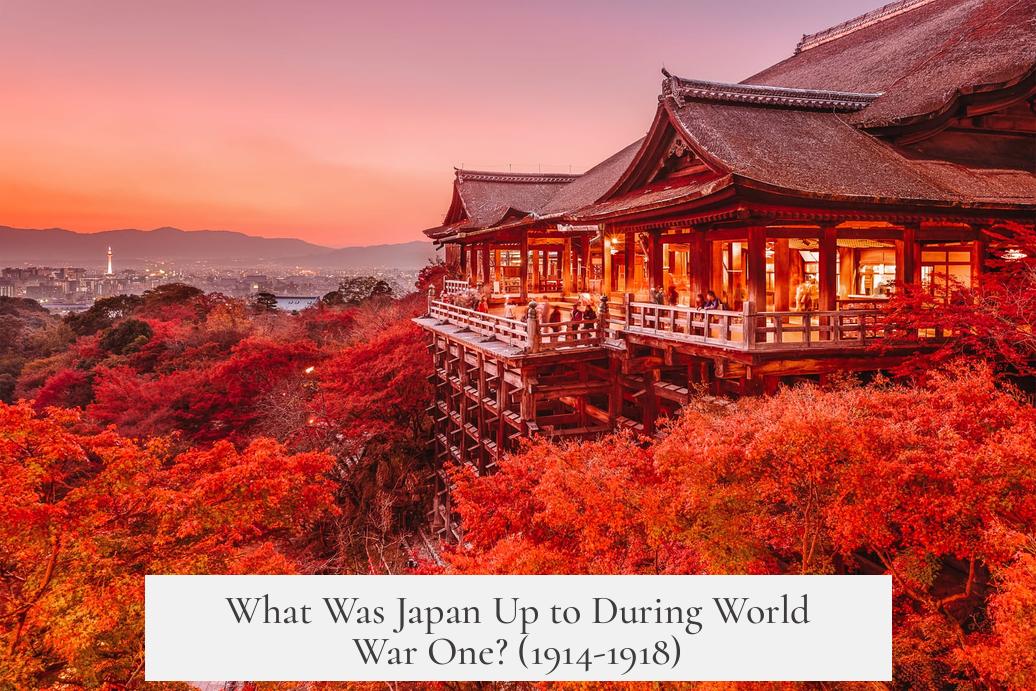
Japan entered World War One on August 23, 1914, aligning with the Entente Powers. But it wasn’t just about showing loyalty to Britain; they had bigger plans. Japan used the war as a stepping stone to extend its empire and bolster its status as a world power, remarkably shaping the conflict’s Pacific and even Mediterranean theaters.
World War One wasn’t just European trench warfare. It was a global jigsaw, and Japan was quietly placing key pieces across the Pacific and beyond. They weren’t just along for the ride as Britain’s sidekick—they were the East’s assertive player aiming for territorial expansion and influence. How did they do it, and why should anyone care? Let’s take a detailed and slightly entertaining journey through Japan’s multi-faceted involvement.
Jumping In: Japan’s Official Entry into the War
August 23, 1914, is a date that doesn’t get a lot of spotlight in World War One timelines, but for Japan, it’s a big deal. Just 19 days after Britain declared war on Germany, Japan threw its hat into the Entente ring. This wasn’t a casual RSVP — it was a full-blown entrance, driven both by alliance obligations and strategic ambitions.
Many histories brush over Japan’s role in WWI, but make no mistake: Japan’s military was actively engaged. Their navy wasn’t just showing off for the cameras; it was aggressively hunting German naval forces and securing vital territories in East Asia and the Pacific.
The Motive: Why Did Japan Join the Fray?
Let’s pause to talk strategy. Japan’s decision wasn’t just because Britain asked nicely. The Anglo-Japanese Alliance signed in 1902 gave Britain the right to request help, but didn’t force Japan’s hand.
Japan saw the war as a golden ticket. The country wanted to carve out more imperial holdings and establish a status equal — or superior — to European powers. Joining the war projects wasn’t just a favor; it was an opportunity for Japan to step up on the global stage.
Naval Power Play: Taking on Germany in the Pacific
Within days of the war’s outbreak, Japan acted. Britain called for help in identifying hostile ships prowling the Indian Ocean and Southwest Pacific, particularly the dreaded German East Asia Squadron headquartered in the Kiautschou Bay concession area in China.
Japan’s Imperial Navy and Army swung into action with a laser focus on Tsingtao (or Qingdao). Between August and November 1914, an Allied force led by Japan besieged this German foothold on the Shantung Peninsula. The siege ended with German and Austro-Hungarian commanders surrendering on November 7, 1914.
That’s just the start. Several formidable Japanese ships played key roles in securing vast swathes of ocean and protecting Allied interests:
- Kongo at Midway Island
- Izumo safeguarding shipping near Mexico
- Ibuki and Chikuma alongside Allies near Singapore
- Yahagi and Hirado patrolling shipping routes to Australia
Their mission? Sweep the Pacific clear of German ships and keep vital lines of communication and trade safe. The Japanese navy showed it wasn’t messing around.
Seizing Islands: Japan’s Tropical Grab
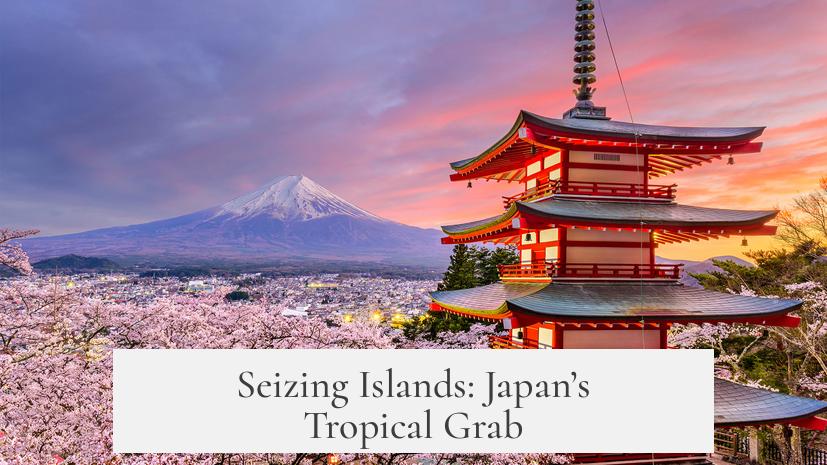
After capturing Tsingtao, Japan targeted German colonial holdings in Micronesia. Between September and October 1914, Japanese forces moved on the Marshall Islands, the Caroline Islands, and the Marianas.
Pretty soon, Australia got jittery. Fearful of Japanese expansion—Japan wasn’t exactly knocking politely on the door—they pushed Britain to assert control over these islands. Britain, keen to maintain its alliance with Japan and naval cooperation, sided with Tokyo until the war’s end. This caused a diplomatic headache.
The Australian government even proposed to take over German-held Yap island from Japan, but the Japanese navy protested. This little spat highlighted how Japan was aggressively establishing a Pacific presence, with strong boots on multiple islands, causing tensions with Allied dominions.
Guardians of the Convoys: Protecting Allied Troops
Japan’s navy wasn’t just busy capturing islands—by October 1914, the battle cruiser Ibuki began escorting ANZAC (Australian and New Zealand Army Corps) convoys to the Middle East.
Think about that. Japanese ships were sailing thousands of miles past their home waters, guarding troop transports en route to battlefields far away. They even escorted French convoys moving troops from Indochina to the Red Sea. That’s a global reach few had anticipated from Japan in 1914.
Taking the Fight to Europe’s Backyard: Mediterranean Operations
In March 1917, things got even more interesting. Admiral Sato Kozo led the Tenth and Eleventh Destroyer Flotillas from Singapore into the Mediterranean. Japanese destroyers helped protect Allied shipping from Austro-Hungarian mines and submarine attacks.
The Japanese were praised for being efficient and hardworking. Their ships spent more time at sea than comparable British, French, or Greek vessels, showing impressive operational readiness. It’s a bit surprising to think of Japanese destroyers patrolling the Mediterranean during World War One, but there they were—far from home yet decisively engaged.
Beyond the Sea: The Siberian Intervention and the 21 Demands
Japan’s ambitions didn’t stop with naval battles. They sent about 70,000 troops as part of the Allied Siberian Expedition during the Russian Civil War. The goal? Support anti-Bolshevik forces and protect Japan’s interests in the region.
Meanwhile, back in East Asia, Japan made a bold political move in 1915 with the infamous 21 Demands to China. These demands sought to expand Japanese control and influence over Chinese politics and economy.
Not everyone was thrilled. The United States and Britain opposed these aggressive demands, though Japan softened their terms, reducing them to thirteen demands. Even so, it was a clear demonstration of Japan’s imperial agenda during the chaos of World War One.
Strategies, Diplomacy, and Aftershocks
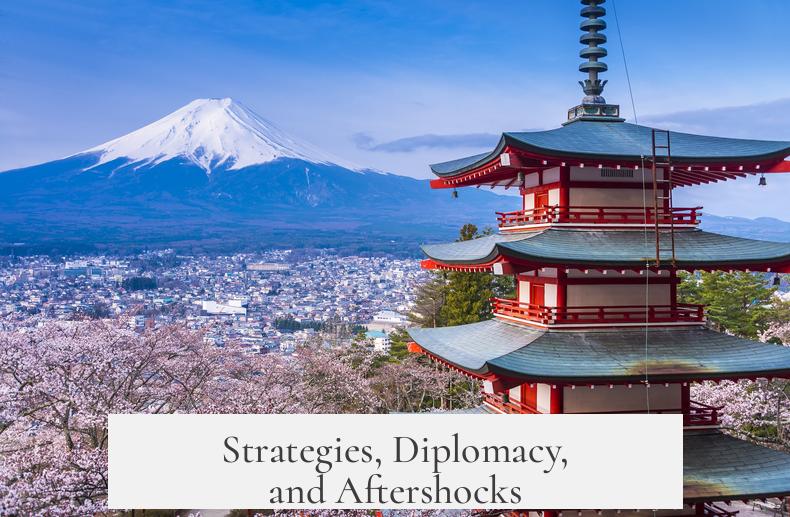
Japan justified seizing Tsingtao as a military necessity to deny Germany a Pacific stronghold. Ambassador Kato pushed Britain to recognize Japan’s retention of seized German territories as adequate wartime compensation.
Britain agreed, valuing Japan’s naval support in the Pacific and Mediterranean. Meanwhile, Australia, wary of Japan, protested the loss of influence over Pacific islands but ultimately had to accept Britain’s pragmatic decision.
Consequently, Australia ramped up its military contribution, pushing conscription under Prime Minister William Hughes to ensure it had a voice at the post-war peace talks.
Japan’s efforts in WWI weren’t just about immediate wartime gains—they laid the foundation for Japan’s future expansion and regional dominance in the Pacific. This dual approach of military power and political maneuvering foreshadowed the tense dynamics that would shape East Asia in decades to come.
Summary: Japan’s Multifaceted Role in World War One
Japan’s involvement in the First World War was far from a footnote. It was a calculated move blending alliance obligations with imperial aspirations. The country swiftly seized German holdings in China and the Pacific, marched its navy across oceans to protect Allied interests, and inserted itself into post-war negotiations in a position of strength.
Japanese troops marched into Siberia, while diplomats pressured China with overwhelming demands. From Pacific islands to Mediterranean seas, Japan’s presence was felt—and not always welcomed by its Allies.
By the war’s end, Japan had significantly enhanced its regional influence. These years marked Japan’s transition from regional power to imperial juggernaut, setting the stage for the dramatic events in Asia during the interwar period and beyond.
So, next time you picture WWI, don’t forget the Empire of the Rising Sun. It wasn’t just passively watching—it was rewriting the rules of global power under the shadow of that massive conflict.
What motivated Japan to join World War One?
Japan joined the war to honor its alliance with Britain and to expand its empire. The Anglo-Japanese Alliance allowed Britain to request aid, but Japan saw this as a chance to increase its influence and territories.
What role did Japan’s navy play in the Pacific during the war?
The Japanese Navy attacked German-held Tsingtao and patrolled vast Pacific waters. Several warships escorted Allied convoys and hunted German raiders, protecting sea routes and communications.
How did Japan’s seizure of German Pacific islands affect its relations with Australia?
Japan captured German islands in Micronesia, causing fear in Australia. Australia wanted control over some islands, but Japan refused. Britain supported Japan to keep the alliance strong, despite Australian protests.
Did Japan contribute to naval efforts beyond the Pacific?
Yes, Japan escorted ANZAC troop convoys to the Middle East and deployed destroyers in the Mediterranean. Their forces helped protect Allied shipping from enemy submarines and mines.
What was Japan’s involvement in the Siberian Expedition?
Japan sent about 70,000 troops to join the Allied intervention in Siberia. This military action extended their influence in East Asia and supported anti-Bolshevik forces.
